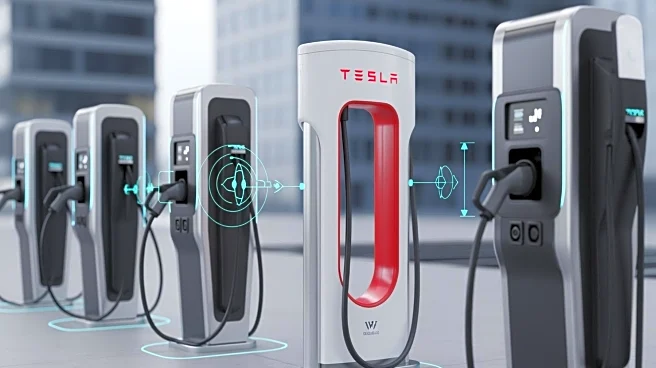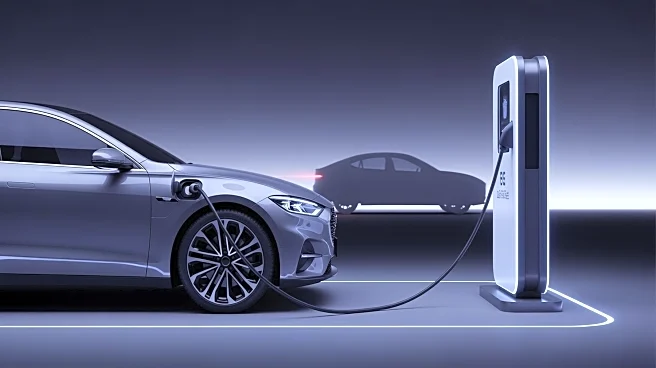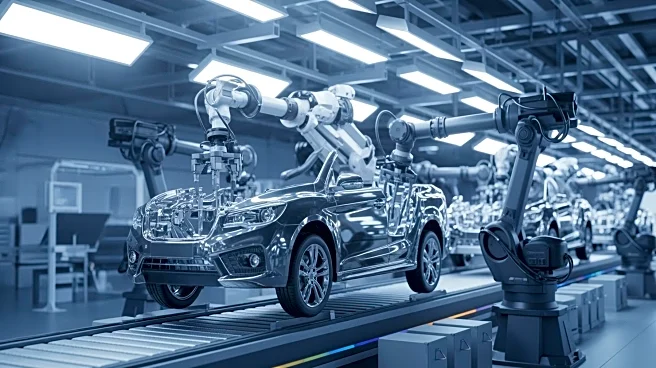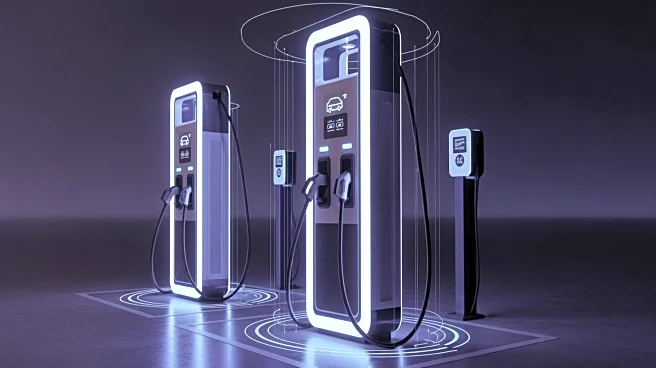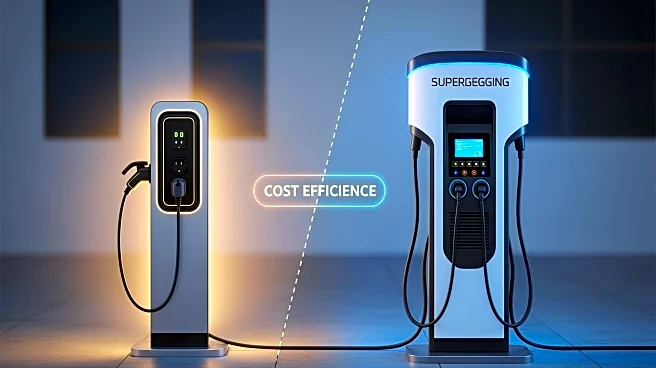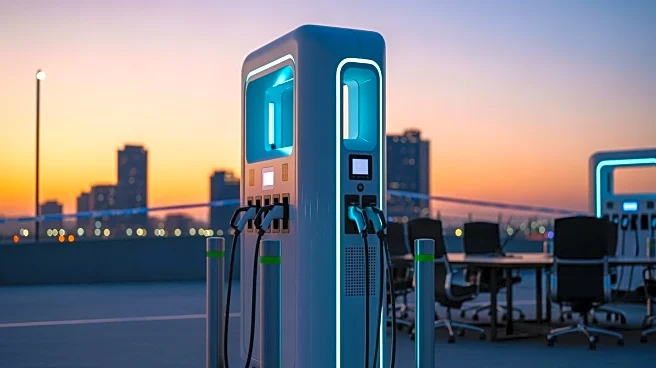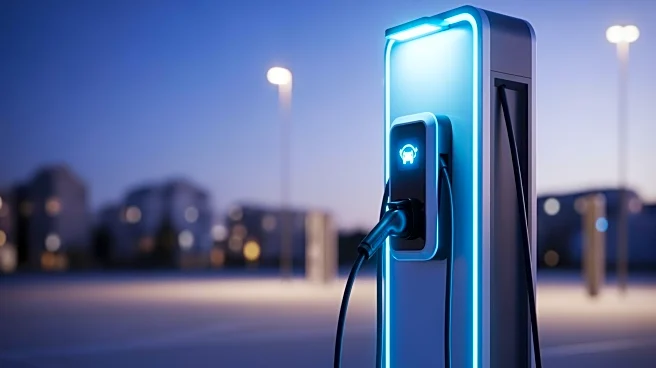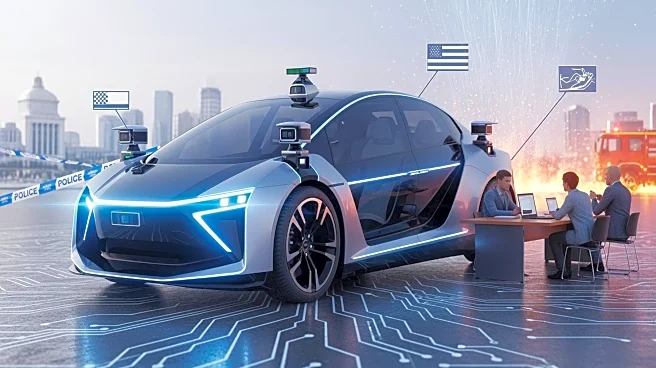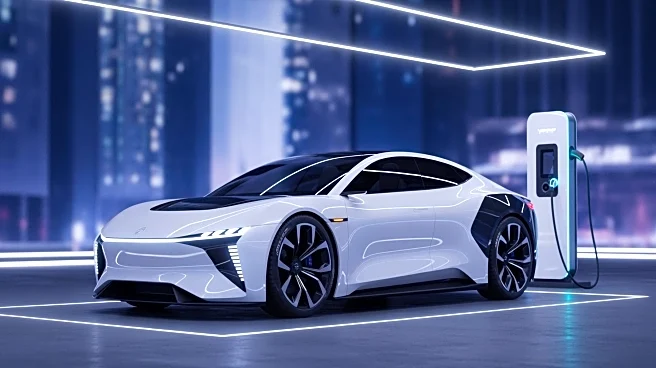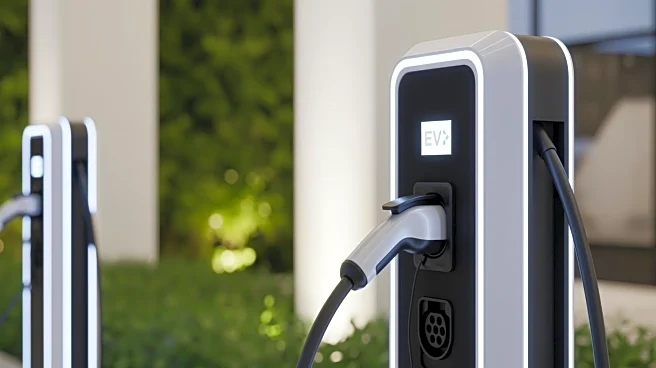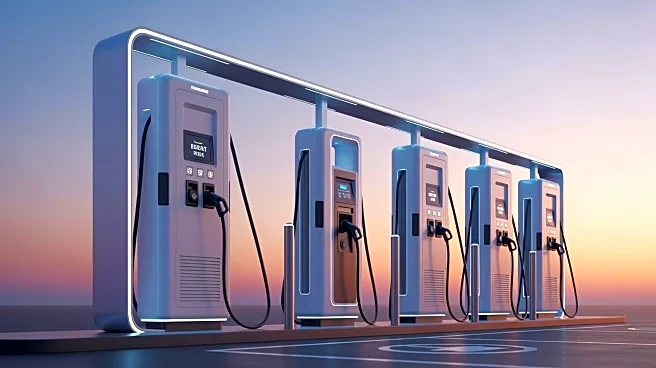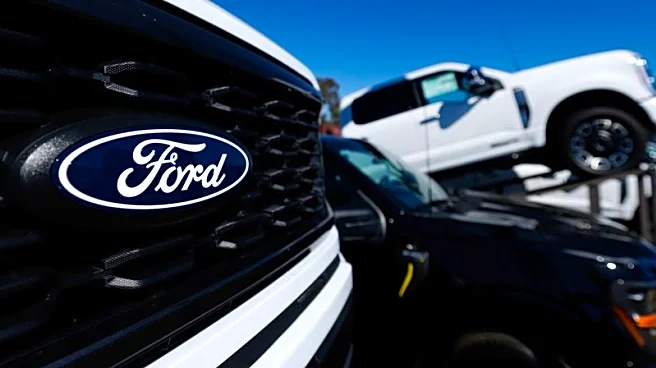What's Happening?
The latest models of electric vehicles (EVs) are now being equipped with Tesla's North American Charging Standard (NACS), which allows them to connect seamlessly to Tesla's Supercharger network. This transition, however, has led to a proliferation of adapters,
as public charging stations like ChargePoint, Electrify America, and EVgo require adapters for these new EVs to connect. The change affects a significant portion of the 4 million EVs in America, as these vehicles now need adapters to use non-Tesla charging stations. Automakers such as Hyundai, Lucid, and Rivian are including adapters with their new models to accommodate this shift. General Motors is also transitioning its vehicles to the NACS, starting with the 2026 Cadillac Optiq. Meanwhile, ChargePoint is introducing the Omni Port, a new station feature that integrates adapters directly into the charging station to simplify the process for EV owners.
Why It's Important?
This transition to Tesla's charging standard is significant for the EV market as it highlights the growing influence of Tesla's infrastructure in the industry. The need for adapters underscores the challenges of standardizing charging systems across different manufacturers and networks. This situation could impact consumer confidence and convenience, potentially slowing the adoption of EVs if charging becomes cumbersome. However, it also presents an opportunity for companies like ChargePoint to innovate and improve the charging experience. The shift could lead to increased competition among charging networks to offer more user-friendly solutions, ultimately benefiting consumers.
What's Next?
As more automakers adopt Tesla's charging standard, the industry may see further developments in charging infrastructure to accommodate this change. Companies like Electrify America are already testing NACS charging at select stations to gather data and improve customer experience. The introduction of integrated adapter solutions like ChargePoint's Omni Port could become more widespread, potentially setting a new standard for charging stations. Automakers and charging networks will need to collaborate closely to ensure compatibility and ease of use for consumers, which could lead to further innovations in charging technology.
Beyond the Headlines
The transition to a new charging standard raises questions about the long-term sustainability and interoperability of EV infrastructure. As the industry moves towards a more unified system, there may be legal and regulatory implications regarding standardization and competition. Additionally, the reliance on adapters could lead to increased electronic waste if not managed properly. The shift also highlights the need for ongoing investment in charging infrastructure to support the growing number of EVs on the road.
